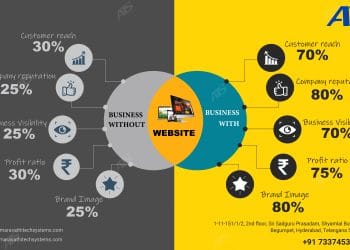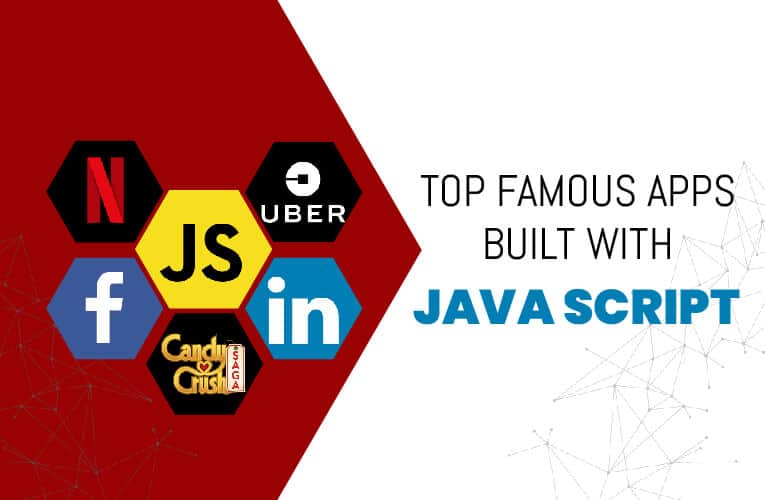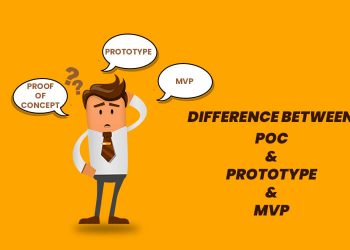Mobile device production is an increasingly popular platform for product creation due to the exploding popularity of smartphones and tablets. In reality, smartphone applications have become an important component of most corporations, and revenue is expected to reach almost $600 billion by 2020. As customers distance themselves from desktop computers and turn to their mobile devices, this productive and rising industry has drawn companies from every corner of the marketplace.
Key Factors of Mobile App Development
- Mobile app development is the development of software that is programmed to run on mobile devices and configured to take advantage of the specific functionality and hardware of those products.
- Native apps, hybrid apps and HTML5 apps include the types of mobile apps that developers make.
- The industry of creating smartphone applications is set to expand to almost $600 billion in 2020.
Mobile app development considerations
Ultimately, addressing the performance challenge on any particular device relies on the native creation of an app on that device. This involves designing the code on a particular computer especially for the hardware. This proves very straightforward in the case of iOS smartphones, as mobile developers only require iPhone and iPad versions of the software to achieve universal usability. However, for Android users, each smartphone or tablet runs on different hardware and various operating system variants.
App development process
The app creation process has six main stages, regardless of the sort of project you choose to bring to life. Breaking the project down into these basic steps would help you easily and effectively create the app.
- Idea: Put any analysis into answering a few questions about it while brainstorming software concepts. What question is this software solving? Who is the audience for the target? Why are these characteristics significant? Have related apps for the rivals.
- Design: First, you can develop a user interface (UI) and user experience (UX) to manage and make it easy to follow the user around the software.
- Development: You will write the code for your app during this process, build the code and start preliminary testing.
- Testing: You’ll evaluate the consistency, any malfunctions and what you can change by checking your software.
- Launch: You will publish it in marketplaces such as the Apple App Store and Google Play until the app is bug-free and ready to go.
- Marketing: To get consumers to use the software and give you input about how to maximise customer experience, create a marketing campaign.
Best platforms for building a mobile app
Only a few short years back, you had to either know how to code or hire someone to create the app for you if you wanted to develop an app. Fortunately, over the last few years, low-code and no-code applications and utilities have arisen to help you bring your vision to fruition. To help you create a mobile app, here are five platforms:
- Appery: Appery is the creator of a smartphone app that runs exclusively in the cloud, which means there is no programme to instal or use. A visual editor is supported by the framework to drag and drop new components into the app and auto-generate code for these components.
- Mobile Roadie: Mobile Roadie is a site that deals for multiple platforms, including RSS feeds, Twitter and Google News, for marketers looking to create a very visual app. The creator allows push alerts to be sent out and pulls data from several sources, including XML, JSON, PHP, CSV, and HTML.
- GoodBarber: GoodBarber is a perfect forum for you if you want to monitor any part of your software but don’t have much code-writing expertise. Since the software can be designed for desktops and smartphones, you can create an app for your iPhone or Android devices and also use the app to replace your existing website.
- Appy Pie: Appy Pie helps you, as a cloud-based DIY app designer, to develop and publish an app without any programming skills on any platform. As the platform is based on the cloud, all the components can be dragged and dumped online. You can submit it to be used on iOS, Linux, Windows and even Progressive platforms until your HTML5 app is done.
- AppMachine: AppMachine is another easy-to-use platform with a drag-and-drop GUI, enabling you to create an app effortlessly while applying your creative look to it. You can select fonts, images, colours, and directions of your own and be in full control of your creation. It also provides monitoring features for in-service applications, so you can see how it will function on computers and mobile devices and note what improvements need to be made.
Types of mobile apps and programming languages
Mobile applications are developed using a wide variety of programming languages and frameworks, much like desktop applications. Although iOS and Android, the most popular operating systems, have done an outstanding job of standardising the forms of mobile app creation open to programmers, applications will still differ.
Here are some mobile app types:
- Native App Development
The use of platform-specific programming languages, software development kits, and development environments provided by the suppliers of the OS is native app development. In other words, these applications can be built independently for each device if you are planning an app for iOS and Android, using entirely different technology stacks.
This strategy has considerable advantages and is the most common among developers of mobile apps. First of all, all available platform characteristics and compatible devices are supported by native applications. At the same time, with native resources, you can create a special user interface and make confident that each OS user feels at home. Native applications, in comparison, have better efficiency and responsiveness.
When To Go, Native?
- For iOS and Android production, you have time and money to have distinct teams.
- For superior UI and results, you have the cash and are willing to pay an extra buck.
- If you need complete access to functionality associated with hardware, such as gestures, geolocation, touch ID, go to Native.
- Building an app/game rich in graphics demands the best efficiency and tempo.
Advantages of Native App Development Disadvantages of Native App Development
- For iOS, Linux, and any other device you want to instal the software on, you will have to build a separate codebase.
- They’re certainly going to cost you a lot of cash and take a longer time to market.
Some Native Apps Out There
Some of the most popular applications are fully Native like Pokemon Go, Twitter, Google Maps, LinkedIn.
- Hybrid App Development
The development of hybrid applications is known as a kind of cross-platform. In this development technique, using common web technology and resources such as JavaScript, CSS, and HTML5, the framework core is built and then executed within a native shell.
The resulting apps from the hybrid creation approach are identical to any form of a native smartphone app with the speed of a standard web application and user interface. Notably, the use of a single code base requires both platforms to be distributed, minimising costs relative to native software. Finally, hybrid applications provide access to system hardware modules and native platform libraries with hardware-dependent capabilities.
Advantages of Hybrid App Development
- Managing one codebase for your programme is the greatest gain.
- Save time and cash by recruiting fewer developers and easily hitting the market.
- If you have developed an application on one platform, it is easily scalable.
- Hybrid applications also give you access to system capabilities.
Disadvantages of Hybrid App Development
- Hybrid Applications’ performance is not at par with Native Applications.
- The programme UI/UX is, let’s say, just not the same.
- The production of cross-platform apps is difficult, particularly if you are looking for a “native user experience.”
Some Example of Hybrid Applications
There are several well-known hybrid applications in the app store. Some popular ones are Yelp, BaseCamp, Untappd.
- Cross-platform App Development
As the name suggests, a cross-platform smartphone device means an app that can run on multiple devices. As it addresses the problem of developing a different framework for each mobile device, the cross-platform solution is a successful alternative to native development. In other words, this concept allows apps to be delivered simultaneously across multiple platforms using languages and tools that are different from the native tools offered by Google and Apple.
Following this approach, developers use JavaScript or .NET/C# based cross-platform frameworks and tools. As a result, you need only one team with the same ability on both apps if you settle on a cross-platform strategy, be it for iOS, Android, or Web app. Moreover, you should do so without a compromise on squad composition and schedule because you need to release all your applications at the same time.
When Should You Go For Cross-Platform App Development?
- Don’t you have time? If you intend to hit the market in less than six months, then you might want to create a cross-platform app.
- If you want to create a low-budget app with a basic UI but a powerful logic.
Advantages of Cross-Platform App Development
- The production of cross-platform applications can be 30 per cent cheaper and 40 per cent faster than the development of native apps.
- Develop apps with a clear brand name on multiple platforms.
- It allows for reusability of up to 70 per cent code.
Popular Cross-Platform Applications Out There
Some of the cross-platform applications built using Flutter and Xamarin are Google Ads, Picturex, Reflectly, Birch finance, etc.
- Progressive Web App Development, PWA
Progressive creation of mobile applications is a step towards reaching the web app experience of native apps. They add in enhancements such as push alerts, offline mode, home screen loading, computer hardware control such as vibration, upgraded web interface touch movements.
To make a web application work like a desktop or smartphone application, Modern Web App creation is just a collection of best practises. They seek to have an interface that is so uniform and smooth that consumers can not discern between a Progressive Web App and a Native Smartphone App.
Advantages of Progressive Web Apps
- Easy app maintenance
- The use of a single codebase
- Mobile-friendly UI
- You don’t need an app store to host or download
- Works on and offline
- Rapid Mobile App Development: RMAD
To build cross-platform software in a limited time, the Fast Mobile App Creation approach is used. It requires the use of specialised programming tools that are code-free or low-code to programme basic applications for different market solutions.
To begin with, this technique is somewhat close to the approach of rapid application creation focused on little panning, initial prototyping, recyclable components of the software, and the use of the adaptive process.
Rapid mobile developers announce the functions and functionality of applications on the frontend, and the backend converts the specifications into javascript. The frontend requires metadata to run in this situation. Effectively, this is achieved by summarising the key details in a database about an application’s features, such as resources managers or user interface components. Thus, the need for database coding is cut off.
Advantages of the RMAD Approach
- Little investment ratio to ROI
- Low complexity in the development process
- Fits multiple projects types
- Low-code/no-code development
- Developers require little or no experience
- Reusable code base
To Wrap
As we progress towards a hundred per cent mobility level, it is more important for the quality and usefulness of mobile apps to determine their acceptance and remain. Making and breaking the app’s popularity depends on the app’s intent and the way it is treated. The above-mentioned options for production have their intent. This represents the way you would like to provide your customers with experience through your app.
Before you start building the concept, examine and appreciate the vulnerabilities, risks and opportunities that lie with each approach, whether it is hybrid or indigenous. Stay prepared for the strategies. Once everything is ready, the solution will take you less than five minutes to decide. Using the strategy that best serves your organisation is the final say.












